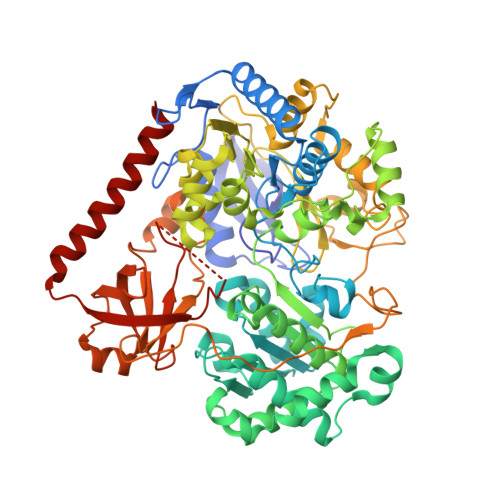Formate-Reduced E. Coli Formate Dehydrogenase H: The Reinterpretation of the Crystal Structure Suggests a New Reaction Mechanism.
Raaijmakers, H.C.A., Romao, M.J.(2006) J Biol Inorg Chem 11: 849
- PubMed: 16830149
- DOI: https://doi.org/10.1007/s00775-006-0129-2
- Primary Citation of Related Structures:
2IV2 - PubMed Abstract:
Re-evaluation of the crystallographic data of the molybdenum-containing E. coli formate dehydrogenase H (Boyington et al. Science 275:1305-1308, 1997), reported in two redox states, reveals important structural differences for the formate-reduced form, with large implications for the reaction mechanism proposed in that work. We have re-refined the reduced structure with revised protocols and found substantial rearrangement in some parts of it. The original model is essentially correct but an important loop close to the molybdenum active site was mistraced, and, therefore, catalytic relevant residues were located in wrong positions. In particular selenocysteine-140, a ligand of molybdenum in the original work, and essential for catalysis, is no longer bound to the metal after reduction of the enzyme with formate. These results are incompatible with the originally proposed reaction mechanism. On the basis of our new interpretation, we have revised and proposed a new reaction mechanism, which reconciles the new X-ray model with previous biochemical and extended X-ray absorption fine structure data.
- REQUIMTE/CQFB, Departamento de Química, Faculdade de Ciências e Tecnologia, Universidade Nova de Lisboa, 2829-516, Monte de Caparica, Portugal.
Organizational Affiliation:





















